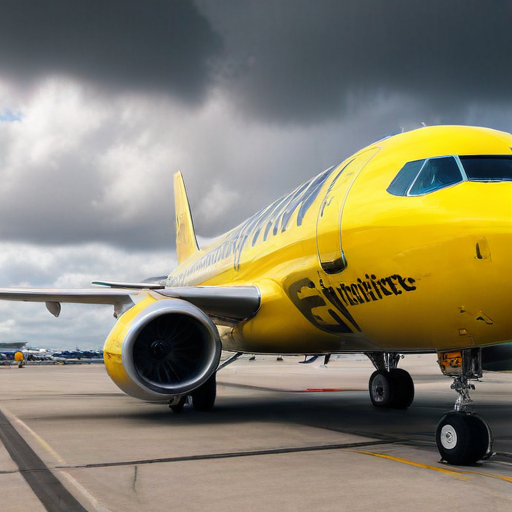Spirit Airlines announced on Monday that it has filed for Chapter 11 bankruptcy protection, aiming to restructure itself as it continues to navigate the challenges posed by the pandemic and a previously unsuccessful attempt to merge with JetBlue.
As the largest budget airline in the United States, Spirit has reported losses exceeding $2.5 billion since early 2020 and is confronted with upcoming debt obligations totaling over $1 billion within the next year. Despite this, the airline reassured customers that operations will remain uninterrupted during this prearranged bankruptcy process. All tickets, credits, loyalty points, and other membership benefits will continue to be honored.
Following a 25 percent drop in share prices on Friday, Spirit saw a slight recovery with a near 4 percent increase on Monday morning. CEO Ted Christie noted ongoing discussions with bondholders regarding the looming debt maturities, indicating that addressing these financial hurdles is a priority for the airline.
While Spirit has seen a slight increase in passenger counts—up 2 percent in the first half of the year compared to last year—revenue generated is down significantly. Passengers are paying an average of 10 percent less per mile, contributing to the airline’s financial difficulties. Rising labor costs, competition from larger airlines, and a surplus of flights contributing to lower fares are among the factors leading to this trend.
The Association of Flight Attendants has reassured union members that there will be no immediate furloughs or changes to pay and working conditions during this transition. Spirit’s strategy has also shifted; the company has introduced bundled ticket options incorporating added amenities, a notable departure from its traditional no-frills approach.
In a strategic move, Spirit plans to reduce its flight schedule by nearly 20 percent for the last quarter of the year to help stabilize fares. However, analysts suggest that other airlines may ultimately benefit more from this change, given their service overlap on multiple routes.
Additionally, Spirit is encountering operational challenges, including mandatory maintenance on Pratt & Whitney engines, which has resulted in grounding several aircraft. Despite these setbacks, it’s important to acknowledge that Spirit’s relatively young fleet may still position it as an attractive option for potential acquisitions in the future.
Historically, U.S. airlines have seen a variety of bankruptcies, but many have managed to emerge stronger through restructuring. The last major U.S. carrier to go through bankruptcy, American Airlines, successfully emerged in December 2013, simultaneously merging with US Airways.
With a renewed focus on rebuilding its business model and commitment to customer service, Spirit Airlines appears poised for a transformation that could set a positive direction for the company moving forward. This could lead to a more balanced approach, catering to both budget-conscious travelers and those seeking enhanced travel experiences.
In summary, while Spirit Airlines faces significant challenges ahead, its proactive measures and commitment to customer service may just pave the way for a stronger, more sustainable future within the airline industry.
